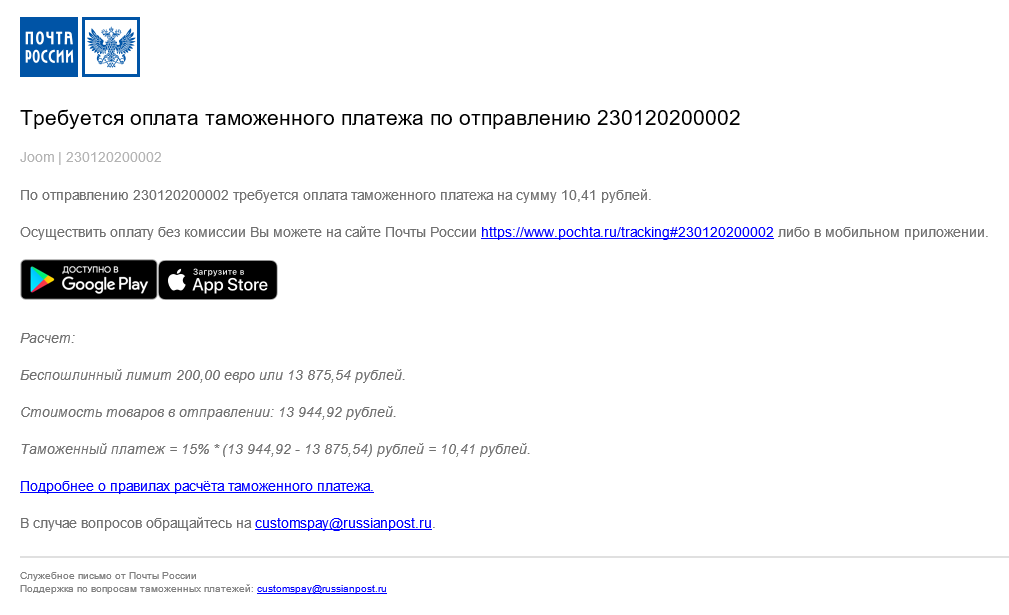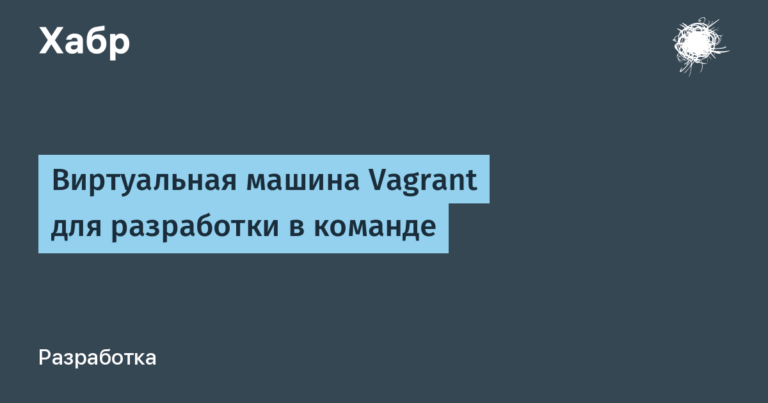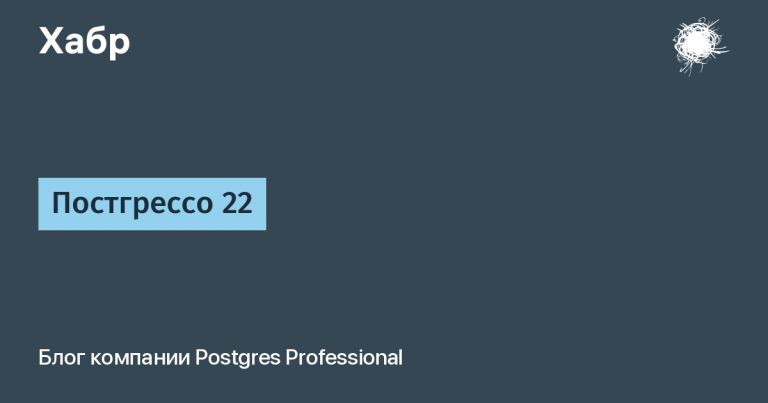How is the delivery of goods falling under the customs limit from January 1, 2020
Since January 1, the duty-free import threshold has decreased in Russia. Now payment is taken from goods more expensive than 200 € and heavier than 31 kg. In the delivery process itself, nothing has changed, but now it can affect more people, so buyers who have not previously addressed the issue of duties have reasonable questions: what do I need to go through customs? How to pay the fee? Will the delivery time increase?
In this article we will look at how the process of calculating and paying duties is arranged and tell about the integration of the Post with the Federal Customs Service (FCS), which simplifies and speeds up customs clearance.
How is the duty calculated
A year ago, the threshold was already lowered from 1000 € to 500 €, but this limit applied to the amount of orders per month and the duty on excess of the cost was 30%. The new restriction, introduced on January 1, 2020, applies to each parcel separately, and the tariff is halved – 15% of the excess in cost, but not less than 2 € per kilogram in case of an excess.
Let’s see how the calculation is made using the example of a parcel with goods worth 250 euros weighing 31 kg and 35 kg. Consider the example in euros, so that the principle is clear. According to it, you can figure out what kind of surcharge should be prepared.
Cost Excess Only
(purchase price – rate of duty-free import) * 15%
(250 € −200 €) * 15% = 7.5 €Exceeding in both cost and weight
(purchase weight – 31 kg) * 2 €
(35 −31) * 2 € = 8 €
To be precise, the cost of goods and the threshold of duty-free import are first converted to rubles, and the percentage of the customs rate is taken from the difference in rubles. The ruble exchange rate, as well as the threshold for calculating the duty, is applied not on the day of payment for the goods, but at the time of submission of the declaration to customs. You can see the calculation formula right here.
How to pay the shipping fee by private carriers
At the request of the FCS, carriers such as DHL and UPS request data for declaration from the buyer and transfer them to a special customs register.
- After placing the order in the store, the buyer receives a message from the delivery service with a link to registration in your account, where you need to provide information about yourself and the purchase: passport details, TIN, phone and email, which you can contact if you have questions, links or screenshots from the site, which show the name and price of the goods at the time of purchase.
- When the goods are in Russia at customs, the buyer will receive a message stating that they need to pay the fee. Customs will not release the parcel until they see the payment.
- Additionally, you will need to pay a customs fee of 250 rubles and, possibly, a commission.
How to pay a fee at the Russian Post
If an online store uses international mail to deliver goods, the process works differently. When the parcel arrives in the Russian Federation, the customs inspector prepares it and, if necessary, prepares documents for the payment of the customs payment: customs receipt order and postal order form with which the parcel is sent to the post office.
Parcels are not delayed at customs pending payment – you pay money directly to customs by postal order already upon receipt of the parcel at the post office. The only limitation: the fee can only be paid in cash with a commission of 4-5% for a postal transfer (the size of the commission differs in different regions). To pay the fee, citizens of the Russian Federation need to bring their TIN and passport with them to the Post Office, and citizens of other countries should take a passport of a foreign citizen.
The customs inspector at the border may have questions about the parcel or the documents accompanying it. In this case, he will send the parcel to the customs office at the location of the recipient. It will also be necessary to come there personally to provide documents. Usually, an extract from the bank with the amount of the purchase, an invoice from the seller (or a screenshot of the screen of the Internet site with the order), passport and TIN is enough. If, as a result, the local customs will decide on the calculation of the customs payment, then the buyer will be issued a customs receipt order and a receipt, according to which it will be necessary to pay. After payment, the parcel will be available at the post office closest to the customs office.
How does the simplified scheme of Russian Post work
Last year, the Russian Post together with the Federal Customs Service launched a simplified customs clearance mechanism that eliminates paperwork from the delivery process and speeds up work. Now marketplace, Post and Customs exchange data online. According to this principle, AliExpress and Joom already work through Mail, generating 75% of packages.
The buyer instructs the Post to the right to represent its interests in operations with customs – to transmit information about the goods, pay a fee, request a refund of the duty, in case the parcel is returned. This speeds up the process at times.
When the order is formed, the online platform transmits information about it to the Mail. These data are submitted for the declaration of purchase and are used to calculate the customs duty. We inform the buyer about this immediately by e-mail with a link for payment.

It looks like an email notification that you need to pay customs payment
When the parcel arrives in Russia, the Post carries out a visual inspection of the parcel, weighs it and, as a result, submits an electronic arrival notification to customs. Based on it, as well as on the basis of previously submitted information about the order, the FCS of Russia automatically decides on the fate of the parcel. Thanks to the automation of this process, shipments do not freeze on the way waiting for payment of duties and pass customs clearance faster. Some customers even notice in the mobile application how the parcel passes customs in less than a minute!
You can pay customs duty on the Post website using the link from the letter or in a mobile application no commission. It does not matter when you do this – as soon as you receive a notification, or in a few days. We immediately pay the fee to the FCS of Russia and take all the risks of communicating with customs so that the goods do not linger on the way.

This is how the customs duty payment window looks on the Russian Post website
If you missed a notification letter, you can find out about the need to pay a fee on the tracking page on the mail site or in a mobile application.

Online payment makes it easy to receive a parcel with a fee – you pick it up at the post office, like a regular parcel, for this it is important to remember to indicate your TIN when making a purchase.
You can pay the fee at the branch upon receipt. But for this you will need to pay 10% of the commission, as well as present either the TIN, if you are a citizen of the Russian Federation, or a passport of a foreign citizen.
We summarize how the delivery process goes if the site works with the Russian Post according to a simplified scheme:
- When paying a fee, you need a minimum set of data: TIN for citizens of the Russian Federation or passport number of a foreign citizen.
- We send the data for declaration to the Federal Customs Service in electronic form and transfer money for you to the FCS for customs payment before the parcel crosses the border of the Russian Federation.
- The parcel arrives in Russia, undergoes a simplified customs clearance process and is sent to the buyer.
- If you paid the fee online – just pick up the package. If not, make a payment at the Russian Post office upon receipt. 90% of customs payments are now made by our customers online.




